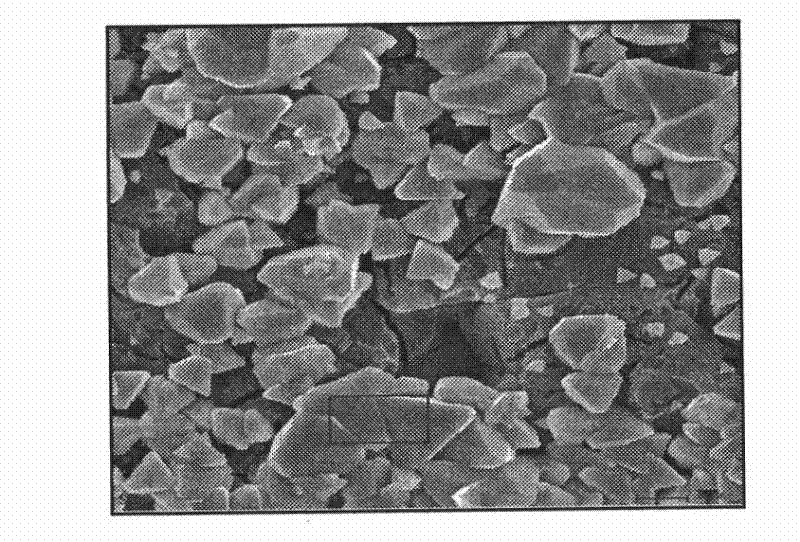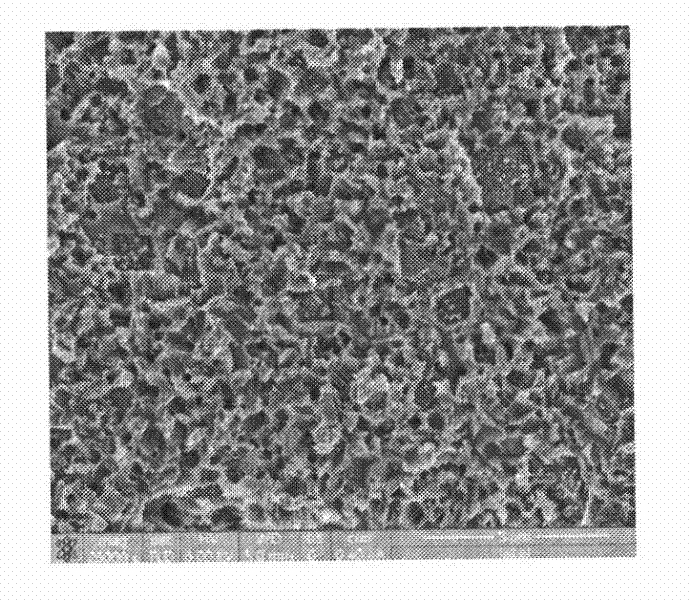Aqueous dispersion system and method for etching polysilicon wafer
A technology for water-based dispersion and polycrystalline silicon wafers, which is applied to the etching field of water-based dispersion systems and polycrystalline silicon wafers, and can solve problems such as increased cost and production environment hazards.
- Summary
- Abstract
- Description
- Claims
- Application Information
AI Technical Summary
Problems solved by technology
Method used
Image
Examples
Embodiment
[0085] Below in conjunction with embodiment further illustrate this patent application. Those skilled in the art can understand that the scope of this patent application is not limited thereto.
[0086] The polycrystalline silicon wafers used in the following comparative examples and examples were all purchased from Konca Solar Cell Co., Ltd.
Embodiment 1
[0092] Weigh 25 mg of analytically pure bismuth hydroxide powder and put it into a beaker filled with 50 ml of deionized water. Ultrasonic breaker (SONICS, Vibro-cell TM VCX 130) dispersed for 30min, then added 0.5mg of C 18 h 29 SO 3 Na surfactant and 1 mg of C 16 f 33 C 2 h 4 (C 2 h 4 O) 8 Surfactant H, continue to sonicate for 2 hours to obtain an aqueous dispersion.
[0093] The same polycrystalline silicon wafer as in Comparative Example 1 was etched using the etching method described in Comparative Example 1 but using the aqueous dispersion system obtained in this example.
[0094] Using FEI NOVA200NanoLab SEM FIB scanning electron microscope (magnification 25000x) to observe the surface morphology of the polycrystalline silicon wafer before and after etching, the results are as follows figure 2 shown. It can be seen from the figure that the surface of the polycrystalline silicon wafer has a uniform and fine textured structure. The average reflectance (mea...
Embodiment 2
[0096] Using the dispersion method described in Example 1, 25 mg of analytically pure bismuth hydroxide powder, 0.5 mg of CH 3 (CH 2 ) 10 CH 2 SO 3 Na surfactant and 1 mg of C 16 f 33 C 2 h 4 (C 2 h 4 O) 8 The H surfactant was dispersed in 50 ml of deionized water to obtain an aqueous dispersion system.
[0097] The same polycrystalline silicon wafer as in Comparative Example 1 was etched using the etching method described in Comparative Example 1 but using the aqueous dispersion system obtained in this example.
[0098] A UV-Vis spectrophotometer (Perkin Elmer Lamda 950) was used to measure the change in reflectance before and after etching, as shown in image 3 As shown, the reflectance of the etched polysilicon wafer has a significant decrease.
PUM
| Property | Measurement | Unit |
|---|---|---|
| thickness | aaaaa | aaaaa |
| electrical resistance | aaaaa | aaaaa |
| electrical resistance | aaaaa | aaaaa |
Abstract
Description
Claims
Application Information
 Login to View More
Login to View More - R&D
- Intellectual Property
- Life Sciences
- Materials
- Tech Scout
- Unparalleled Data Quality
- Higher Quality Content
- 60% Fewer Hallucinations
Browse by: Latest US Patents, China's latest patents, Technical Efficacy Thesaurus, Application Domain, Technology Topic, Popular Technical Reports.
© 2025 PatSnap. All rights reserved.Legal|Privacy policy|Modern Slavery Act Transparency Statement|Sitemap|About US| Contact US: help@patsnap.com



